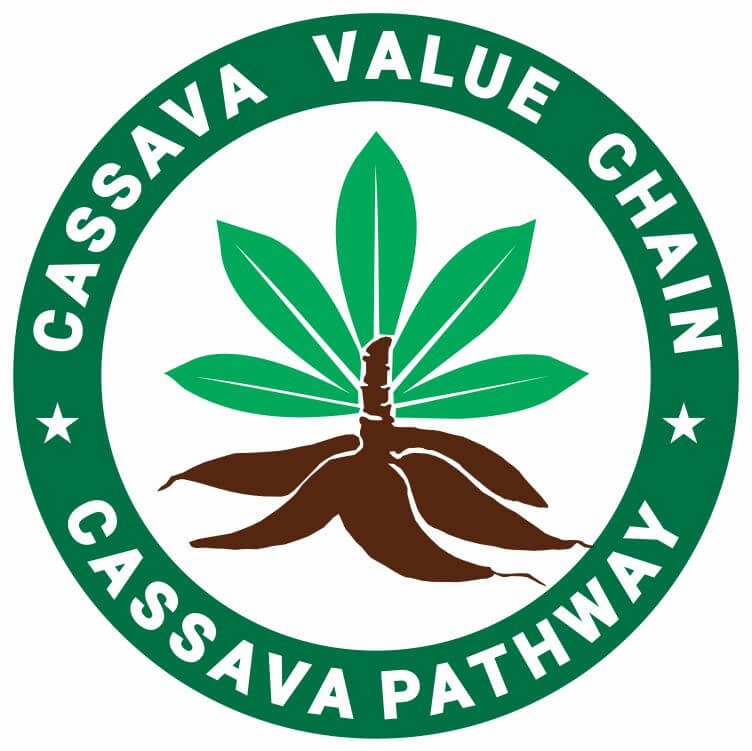Cassava root in the global market is a reality with cassava gaining global attention for its adaptability and diverse uses in food, industry, and biofuels, making it a key player in sustainable agriculture and food security.
Whether it’s used in food products, animal feed, or industrial applications, cassava’s role in global trade is expanding.
You might already know it as a staple food in many countries, but did you know that its demand is rising due to its use in gluten-free diets and health-conscious foods?
The cassava supercrop thrives in poor soil and unpredictable climates, making it a reliable crop in challenging environments.
With growing interest in sustainable food sources and the need for resilient crops, cassava is positioned to play a larger role in addressing food security worldwide. See the top cassava producers in the world.
Table of Contents
- Global Demand for Cassava
- Major Producers of Cassava in the Global Market
- Key Uses of Cassava in the Global Market
- Export and Trade Dynamics
- The World’s Highest Importers of Cassava
- Economic and Social Impacts
- The Future of Cassava in Global Markets
- Conclusion
Global Demand for Cassava
The rise of the cassava value chain and its demand for cassava root in the global market is not just a passing trend; it reflects a broader shift in consumer preferences worldwide.
As health-conscious eating habits evolve, people are increasingly drawn to alternative food sources, and cassava fits this need perfectly.
The root’s versatility and nutritional benefits have made it a popular substitute for other carbohydrates, especially in gluten-free diets.
Africa
In Africa, cassava has long been a staple food, known for its drought resistance and high yield.
But its popularity extends beyond traditional uses like fufu and garri. More cassava-based products, including cassava flour and cassava snacks, are making their way into international markets.
These innovations are part of a larger movement where traditional food crops are being reimagined for modern consumption.
Asia
In Asia, cassava’s role in the culinary world is growing, with products like tapioca pearls or boba pearls used in bubble tea becoming increasingly popular.
As the demand for gluten-free and healthier food options rises, cassava flour is increasingly used as a substitute for wheat flour, helping the crop maintain its strong presence in the global market.
Latin America
Latin America is also embracing cassava, particularly in the form of processed products like chips and snacks.
As consumers gravitate toward more natural, minimally processed foods, cassava is emerging as a favored option for its taste and nutritional benefits.
The shift is part of a larger movement toward healthier living, which plays a key role in the expanding cassava market.
Related: Difference between Maca Root and Cassava Root
Major Producers of Cassava in the Global Market
There are few country players in the cassava industry, but the following countries are on the frontline:
Nigeria
When it comes to agriculture, Nigeria leads the way in cassava production. As the largest producer of cassava globally, Nigeria contributes approximately 20% of the world’s supply.
The favorable climate and fertile soils make it an ideal location for cassava cultivation. For many years, cassava has been a vital part of Nigeria’s food security strategy, and the country is now expanding its focus to include cassava as a raw material for industrial products and biofuels.
Thailand
Thailand holds the position of the second-largest producer, particularly known for exporting tapioca products, especially tapioca starch.
The country has built a robust supply chain and processing industry that supports its position as a major exporter of cassava derivatives.
Indonesia
Following Thailand is Indonesia, with an annual production of around 29 million metric tons of cassava.
The Indonesian government has been investing in programs to improve production efficiency and meet growing demand, particularly for use in animal feed and processed products.
Brazil
Brazil is another key player, contributing approximately 16 million metric tons of cassava to the global market.
The country focuses on both domestic consumption and export, with cassava playing a crucial role in its agricultural landscape.
Related: Making Profit from the Cassava Value Chain
Key Uses of Cassava in the Global Market
The diverse applications of cassava are at the heart of its growing demand. One of the most popular uses is in the food industry.
As mentioned, cassava flour is a favored gluten-free alternative, appealing to consumers with gluten sensitivities or those simply seeking healthier dietary options.
Beyond flour, cassava is increasingly processed into chips, crackers, and other snacks, gaining traction as an enjoyable, nutritious food product.
Animal Feed
In the animal feed sector, cassava has gained importance due to its high carbohydrate content.
It’s often used as a cost-effective substitute for traditional animal feed ingredients, offering nutritional benefits at a lower price point.
This has made cassava a valuable resource in areas with limited access to high-quality feed ingredients.
Biofuel
Additionally, cassava is emerging as a biofuel source, particularly in the production of ethanol.
Its high starch content makes it an attractive alternative to traditional biofuel crops like sugarcane and corn, particularly in countries looking to reduce their reliance on fossil fuels.
The versatility of cassava extends even further into pharmaceutical applications, where it’s used as a base for medicines and other health-related products.
Related: How to Market Your Cassava for Profitability
Export and Trade Dynamics
Exporting cassava and its byproducts is a growing part of the global trade landscape. Major exporters such as Nigeria, Thailand, Ghana, and Brazil contribute significantly to the global supply.
Nigeria, with its large production capacity, exports both fresh cassava and processed products like flour and starch.
Thailand focuses on the international sale of tapioca starch, a key ingredient in food and industrial applications.
Quality Control
However, several challenges in the export market affect cassava’s global competitiveness. Quality control is a major issue, as cassava must meet international standards for both raw and processed products.
Without proper agricultural practices and efficient post-harvest handling, cassava products may fail to meet the quality required for export.
Logistic Challenges
Logistical challenges also pose a threat to efficient trade. Poor infrastructure, particularly in developing regions, complicates the transport of cassava products to international markets.
Trade Policies
Additionally, trade policies, such as tariffs, import quotas, and other regulations, can either promote or hinder the flow of cassava across borders.
Countries with favorable trade agreements may find it easier to access international markets, while those facing stringent regulations may struggle to meet export demands.
The World’s Highest Importers of Cassava
Cassava is becoming more important in the global market. Its value goes beyond being a food source; it’s used in biofuels, animal feed, and various industrial products like starch and flour.
In this chapter, let’s take a closer look at the top countries importing cassava, why they rely on it, and how their demand impacts the global cassava trade.
1. China: The Leading Importer of Cassava
China is the biggest importer of cassava. As the country grows, both in population and industrial needs, cassava is increasingly used in processed foods, especially as a gluten-free option. It’s also crucial for starch production, which is used in industries like textiles and paper.
Beyond that, cassava plays a key role in China’s biofuel production. With a focus on renewable energy, cassava-based ethanol is becoming more important, cementing China’s dominant role in the cassava market.
2. The European Union
The EU is another major importer of cassava. The demand for cassava comes mainly from its food sector, where it’s used as a gluten-free flour alternative in snacks and baked goods. This market has expanded as the demand for gluten-free products has risen.
Additionally, the EU imports cassava starch for use in products like adhesives, paper, and textiles. As sustainability becomes more important, cassava’s role in biofuels also continues to grow.
3. Japan
Japan imports cassava for its food industry, especially for gluten-free options. As dietary preferences shift toward alternative grains, cassava has become a popular replacement for wheat, especially in the production of noodles and other food products.
Cassava starch is also crucial in Japan’s industrial sector, being used in everything from adhesives to paper. The growing demand for cassava-based products is strengthening Japan’s position as a key player in the global cassava trade.
4. United States
The U.S. is a major importer of cassava, particularly for use in food products like gluten-free flour and starch.
As more Americans turn to gluten-free diets, cassava has emerged as a popular alternative. The U.S. also imports cassava starch for use in the paper, textile, and adhesive industries.
Additionally, as biofuels gain traction, cassava-based ethanol is becoming more important in certain states, making the U.S. a key market for cassava imports.
5. South Korea
South Korea relies heavily on cassava for its industrial needs, particularly cassava starch. This starch is used in food products as a thickening agent and in a variety of industrial applications.
South Korea is also using cassava for biofuel production. As the demand for gluten-free foods rises, South Korea is increasingly turning to cassava-based products, making it an important market in the global cassava trade.
6. Indonesia
Indonesia is becoming a major importer of cassava. As the country’s economy grows, it’s turning to cassava for both food and industrial purposes.
Cassava is used in the production of starch, which feeds into Indonesia’s growing food processing and industrial sectors.
Like other nations, Indonesia is also turning to cassava for biofuel production, aligning with its focus on renewable energy sources. With its expanding market, Indonesia is positioning itself as a key player in the global cassava market.
Economic and Social Impacts
Cassava’s role in the global economy goes beyond its nutritional value. In regions where it is produced, cassava cultivation supports rural economies, offering employment opportunities in farming, processing, and distribution.
Employment and Economic Development
By engaging a wide network of stakeholders, cassava production has become an important part of local livelihoods, driving investments in agriculture and infrastructure.
Cassava and Food Security
The crop also plays a key role in food security. Its resilience to poor soil and climate variability makes it an ideal crop for regions facing environmental challenges.
In countries like Nigeria, cassava’s role in the food system has been instrumental in reducing hunger and malnutrition.
The growing interest in cassava-based products offers hope for future food security, especially in areas vulnerable to changing climatic conditions.
Challenges to Cassava Production
However, climate change poses a threat to cassava production. Variations in rainfall patterns, increasing temperatures, and extreme weather events all have the potential to impact yields.
Likewise, pests and diseases can wreak havoc on cassava crops, making it imperative for researchers to find more resilient varieties.
Supply Chain Challenges
Supply chain disruptions are another challenge. Issues like transportation problems, market fluctuations, and trade barriers can all impact the availability of cassava products, ultimately affecting farmers’ incomes and market access.
Developing strategic partnerships and enhancing local infrastructure are essential for ensuring cassava’s economic potential is fully realized.
The Future of Cassava in Global Markets
Looking ahead, cassava’s potential in the global market seems promising. Several key trends will likely drive its growth.
Growing Demand
One of the most significant is the growing demand for healthier food options. As consumers increasingly opt for gluten-free and low-calorie diets, cassava’s versatility and nutritional profile make it an attractive choice for food manufacturers.
Sustainability in Cassava Production
Sustainability will also be a critical consideration in the future of cassava production. As environmental concerns continue to rise, agricultural practices will need to adapt to focus on more sustainable farming techniques.
Agroecology and integrated farming systems are expected to play a key role in ensuring that cassava is produced in an environmentally responsible way.
Innovation in Processing Technologies
Innovation in processing technologies is also likely to drive new product developments, expanding cassava’s market applications.
The creation of new cassava-based products will allow producers to cater to the increasing demand for convenience foods and other market segments.
Cassava and Global Food Security
Finally, cassava has the potential to be a vital part of global food security strategies. Its ability to grow in poor soils and under harsh environmental conditions positions it as a crop that can help address hunger and malnutrition, especially in developing nations.
Conclusion
In conclusion, cassava is much more than just a local food staple, it’s a crop with a growing role in the global market.
With opportunities for innovation, increased demand for healthier foods, and its potential to improve food security, cassava stands poised for a bright future.
However, to capitalize on these opportunities, producers must address the challenges of climate change, market fluctuations, and infrastructure gaps.
The future of cassava is in your hands, whether you’re a producer, investor, or consumer, the time to engage with this remarkable crop is now.

Chimeremeze Emeh is a writer and researcher passionate about Africa’s most transformative root crop—cassava. Through his work at cassavavaluechain.com, he explores the entire cassava industry, from cultivation and processing to its diverse applications in food, health, and industrial use.
He also writes for palmoilpalm.com, where he shares his extensive experience and deep-rooted knowledge of palm oil, covering red palm oil, palm kernel oil, and refined products. His work there reflects his lifelong connection to agriculture and his commitment to promoting sustainable value chains in Africa.
Driven by curiosity and purpose, Chimeremeze aims to shed light on how cassava continues to empower communities, strengthen food systems, and link traditional farming wisdom with modern innovation.

